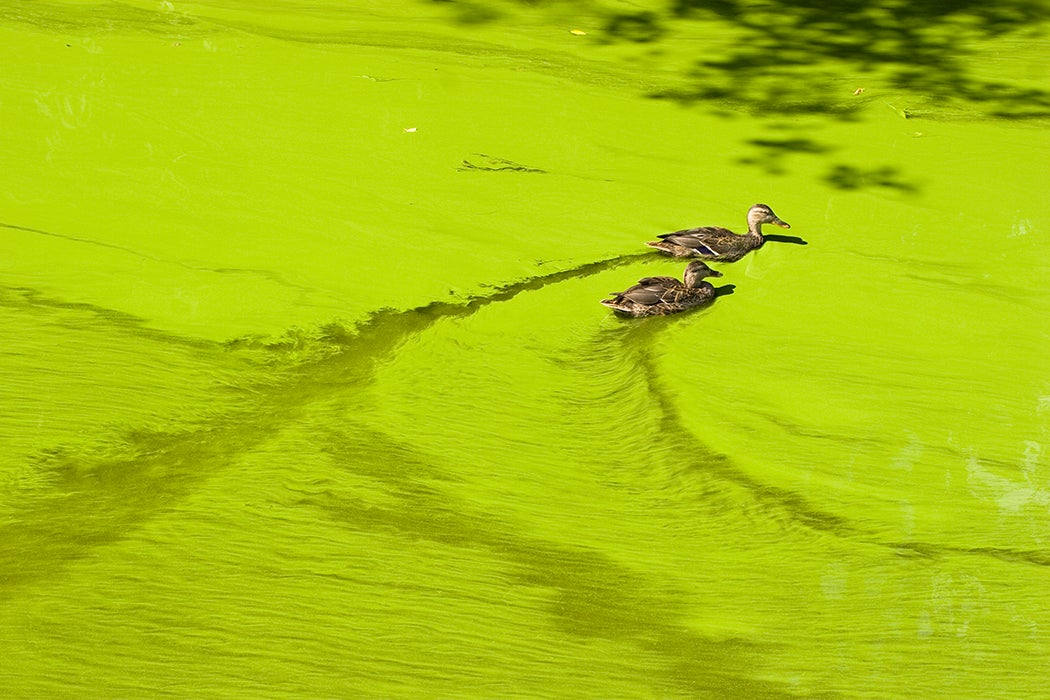It’s become increasingly familiar. In the late summer and early fall, the water in a lake turns green. Soon it is thick and soupy with algae. Tell-tale streaks near the shore suggest that the algae is more than just gross, it harbors toxins that can be harmful to humans, aquatic life, or pets. Harmful Algal Blooms (HABs) are increasing in range, severity, and frequency. What is going on?
Algae is common. It is usually benign, although too much algae can end up depriving the water of oxygen when it dies. A variety of algae, commonly cyanobacteria but occasionally other types as well, can produce toxins. Sometimes the toxins are mostly in the water and don’t affect aquatic life, but human exposure to the water can be harmful. Some toxins are more of an issue if someone eats an organism that is full of the toxins, whether or not the toxins have affected the organism.
The steady increase in HAB events has led to speculation that climate change may be to blame. Unfortunately, cyanobacteria grows faster in warmer temperatures than more benign algae. Higher temperatures also allow the cyanobacteria to form gassy pockets that keep the algae buoyant in mats on the surface where it does the most harm. As water temperature rises, potentially dangerous algae might supplant the relatively harmless types.
Climate change is a contributing factor. In the Great Lakes, fertilizer runoff from agriculture has long been linked to an increase in algal growth. A particularly bad HAB in 2011 was linked to a severe rainfall during a warm spell that washed a particularly high fertilizer load into the water. The interaction has led experts to predict more frequent and severe HAB events in freshwater.
Weekly Digest
In the marine environment, the picture is murkier. There are many more types of toxic marine algae, so temperature dependence is variable. Over the past few decades, marine toxic events have increased in frequency and severe HABs have occurred in areas where historically they were absent. There may be some link with extreme weather conditions, but there are other possibilities. Increased use of the coastline, for example, brings more people into contact with toxins, and increased trade can transport organisms that might spread toxic species to new areas. Nutrient runoff is an important factor in marine blooms as well. The complexity of marine HABs makes it very difficult to pinpoint a cause. In most cases, however, human activity seems to play a role.
Climate change is a wild card that seems to be exacerbating conditions that can lead to HABs, especially in freshwater. The link between climate and marine blooms is more tenuous, but increased rainfall and severe weather events can locally impact marine waters as well. So what is causing the increase? One way or another, humans are.







